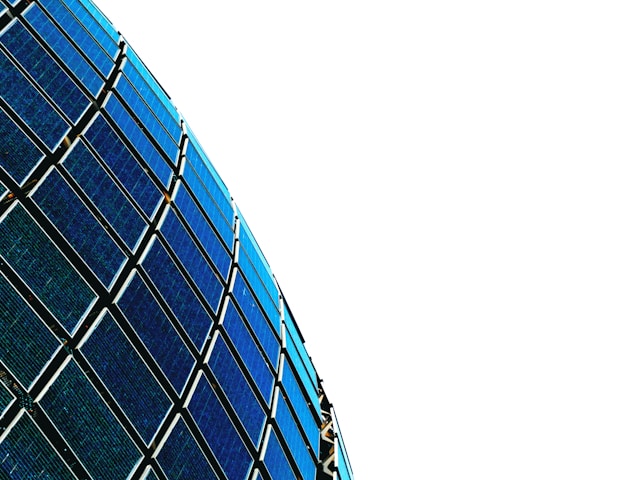Europe is at a critical juncture in its economic transformation. As the world grapples with climate change, the need for cleaner energy and more sustainable industrial practices has never been more urgent. Clean energy and circular innovation are pivotal to Europe’s economic resilience and long-term growth.
Clean Energy: Powering Europe’s Economic Future
Clean energy is no longer a niche segment of the economy—it is the foundation of a resilient future. In 2025, Europe is investing heavily in renewable energy sources such as wind, solar, and hydrogen, alongside energy storage technologies that make renewable power more reliable. The transition to clean energy is essential for meeting EU climate targets, ensuring energy security and reducing dependence on fossil fuels.
Europe is positioning itself for a sustainable economic future by embracing clean energy. The renewable energy sector is driving significant investments, creating new jobs, and supporting the growth of green industries. This transformation is necessary to decarbonize the economy and reduce the reliance on imported fossil fuels, which can be subject to volatile prices and supply disruptions.
Key Drivers of Clean Energy in Europe’s Growth
Several factors are driving Europe’s clean energy agenda, and these include:
- Technological Advancements: Innovations in wind turbines, solar panels, and energy storage systems are making clean energy more cost-effective and efficient.
- Government Policies: The European Green Deal, along with national initiatives, is providing the necessary regulatory frameworks and funding to support the energy transition.
- Private Investment: Both European and international investors are increasingly prioritizing sustainable energy projects, making clean energy an attractive and financially viable option.
Europe’s clean energy push is set to reshape industries from manufacturing to transportation, creating a future-proof economic landscape. However, achieving the ambitious clean energy goals will require continued investments in research, development, and infrastructure.
Circular Innovation: Closing the Loop for Sustainable Growth
Circular innovation is a key component of building resilient economies in Europe. The concept of a circular economy goes beyond traditional recycling, it involves designing products and systems that minimize waste, maximize resource use, and promote sustainability across all industries.
In 2025, Europe is focusing on accelerating the transition from a linear “take-make-dispose” model to a more regenerative and resource-efficient approach.
Circular innovation plays a crucial role in reducing carbon emissions, conserving raw materials, and ensuring the long-term sustainability of industries. This approach not only helps combat environmental challenges but also opens new business opportunities by fostering the development of sustainable products, services, and technologies.
Strategies for Promoting Circular Innovation in Europe
To harness the full potential of circular innovation, Europe is focusing on several key strategies:
- Design for Longevity: Creating products that are durable, repairable, and upgradable to extend their lifespan.
- Resource Recovery: Investing in advanced recycling technologies to recover valuable materials, reducing the need for raw material extraction.
- Business Model Transformation: Encouraging businesses to adopt circular business models like product-as-a-service or take-back schemes to drive resource efficiency.
The rise of the circular economy is not just about reducing waste; it’s about creating value by turning waste into a resource. For Europe, this presents an opportunity to create new jobs, strengthen local supply chains, and enhance the competitiveness of industries by making them more efficient and sustainable.
Integrating Clean Energy and Circular Innovation for Economic Resilience
The future of Europe’s economic growth lies in the integration of clean energy and circular innovation. These two areas are interconnected, and their combined potential can unlock new pathways for sustainable development.
For example, renewable energy sources are increasingly being used to power recycling processes, and sustainable business models are promoting the use of clean energy in manufacturing.
Key Benefits of Integrating Clean Energy and Circular Innovation
- Job Creation: Investment in clean energy and circular systems is driving new job opportunities across sectors such as manufacturing, technology, and services.
- Resource Efficiency: By reducing dependency on raw materials and maximizing the use of renewable energy, Europe can create a more resilient supply chain.
- Global Competitiveness: Europe’s clean energy and circular innovation leadership positions it as a competitive player in the global marketplace, attracting investment and partnerships.
Conclusion: Shaping a Sustainable and Resilient Future
Clean energy and circular innovation are no longer optional but essential to Europe’s economic future. These strategies contribute to sustainability and offer significant opportunities for growth, job creation, and global competitiveness. By prioritizing the integration of clean energy and circular innovation, Europe can build an economy that is resilient, sustainable, and prepared for future challenges.

